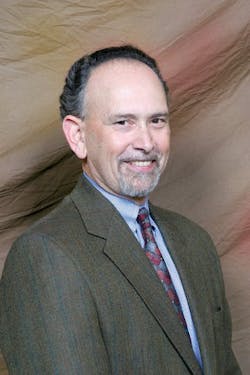THOUGHT LEADER: Samuel S. Unger, RA, MCR, SLCR, MBA, is the Americas Real Estate Leader for Ernst & Young, LLP
BD&C: What is happening with your corporate portfolio? Are there any strong commercial markets right now?
Samuel S. Unger: Most U.S. markets are still soft. There is some perceived bottoming in some very local submarkets in San Francisco, San Jose, and certain New York City submarkets. Downtown Seattle is tightening. Other markets have limited inventory in given classes of buildings, so there is better control over those segments. I am also surprised by how tight some of the smaller Canadian cities are. Researching the brokerage house reports looking for consensus is still helpful, as are ongoing discussions with trusted brokers. We always try to stay ahead of the requirement by trying to understand forward momentum in given markets. It’s also important to note that markets can be quite local, varying by view and size of requirement, so generalities need to be closely tempered by the requirement you are presenting to the market.
BD+C: Where is the best place to invest in real estate right now?
SU: There has been competition for trophy assets in commercial real estate, and a fair amount of money chasing discounted retail assets, according to what I hear. Unfortunately, real estate assets are very difficult to dispose of in weak markets, as too many have discovered to their chagrin. Diversification still rules.
‘Try to understand forward momentum in given markets’
BD+C: When is the commercial real estate market going to rebound?
SU: When you see three or four quarters of positive white collar job growth, you might be tempted to get out of your foxhole. But a critical caution is the fact that all markets and submarkets are local, and impacted by the movement of major companies or particular industry segments.
BD+C: In regard to commercial properties, are owners upgrading or reconstructing these properties? How long does it take for an owner to see a return on their investment after upgrading or reconstructing a property? How is this impacting their portfolio?
SU: This is a thesis question. It all depends on an owner’s portfolio, competitive pressure, leverage, and access to capital. We’ve seen a number of owners of Class A property begin to do reasonable upgrades to comply with the lower tiers of LEED certification because they believe they need this to remain competitive in the market, and we welcome that.
BD+C: Is it more advantageous to construct a new building, or upgrade an existing structure?
SU: I stress that we as an organization are not owners of buildings for reasons specific to the Ernst & Young partnership. We have a very competent advisory services business that assists owners with questions like this. As with any complex question, it all depends on the specific market and the arbitrage available in making a conversion.
BD+C: Are there particular mistakes or errors that you see BD+C readers making in regard to commercial real estate?
SU: If you are talking ownership, the first law is that real estate is volatile and illiquid, and keeps absorbing capital. The second law is to remember the first.
BD+C: How can BD+C readers—architects, MEP engineers, and contractors—work more effectively with a firm like Ernst & Young and other CoreNet members?
SU: We encourage contact with design professionals and contractors. We mandate that members of our real estate group get involved with national and local organizations, and we’re not shy about it. I encourage professionals to get involved with CoreNet. It’s important to realize that the organization encourages mutual long-term benefit—no quick sells, no heavy marketing, but a great opportunity to let people understand both the type of individual you are and something of your business over time. The people of CoreNet are also a tremendous resource, with literally hundreds of years of collective experience in the allied professions.
BD+C: What do architecture, engineering, and construction firms continually do wrong in their dealings with organizations that are CoreNet members? What mistakes do you see them making? What advice would you have for AEC firms to work more effectively?
SU: Great question, and another thesis topic. Approach CoreNet members as a long-term investment. Share experiences and understand the pressures and questions of your potential clients. Don’t talk consultant speak—if asked, talk solutions. Otherwise, grab a beer and share war stories.
BD+C: What is the most important thing you can take away from your involvement with CoreNet on both a personal and professional level?
SU: CoreNet has been a tremendously valuable resource for me. I have established friendships and had the opportunity to go beyond professional relationships with a number of our members. I have also realized that many of the issues I faced, both personally and professionally, are shared problems, with shared solutions. On a professional level, deeper discussion of the issues we face as an organization, and the similarities to the issues faced by my colleagues in CoreNet, help generate more thoughtful solutions. The opportunity to review strategies and tactics for these issues is valuable, as is the review of resources available through service providers, contractors, and suppliers. BD+C
